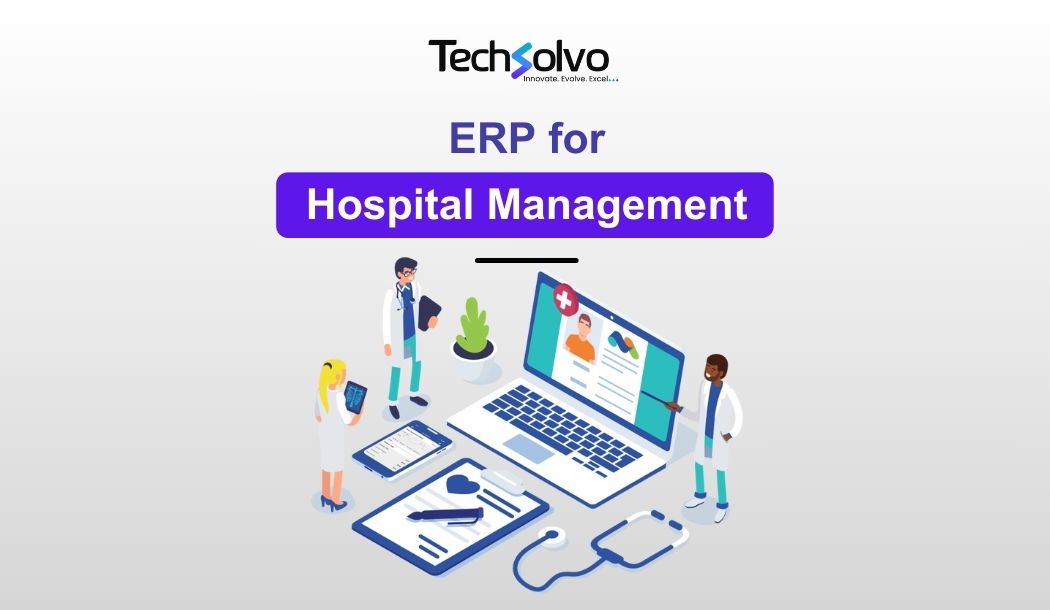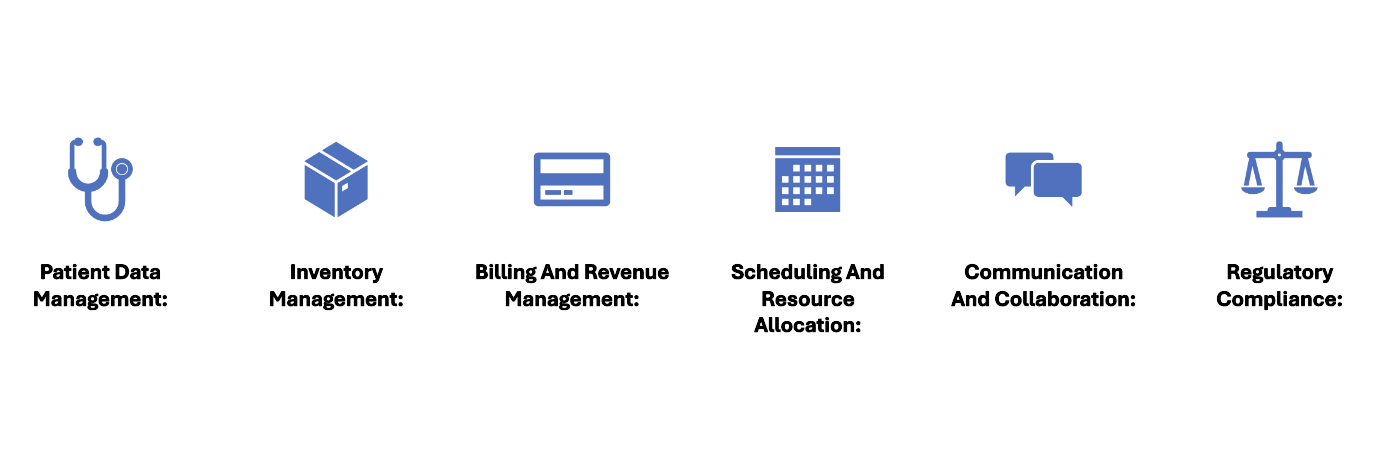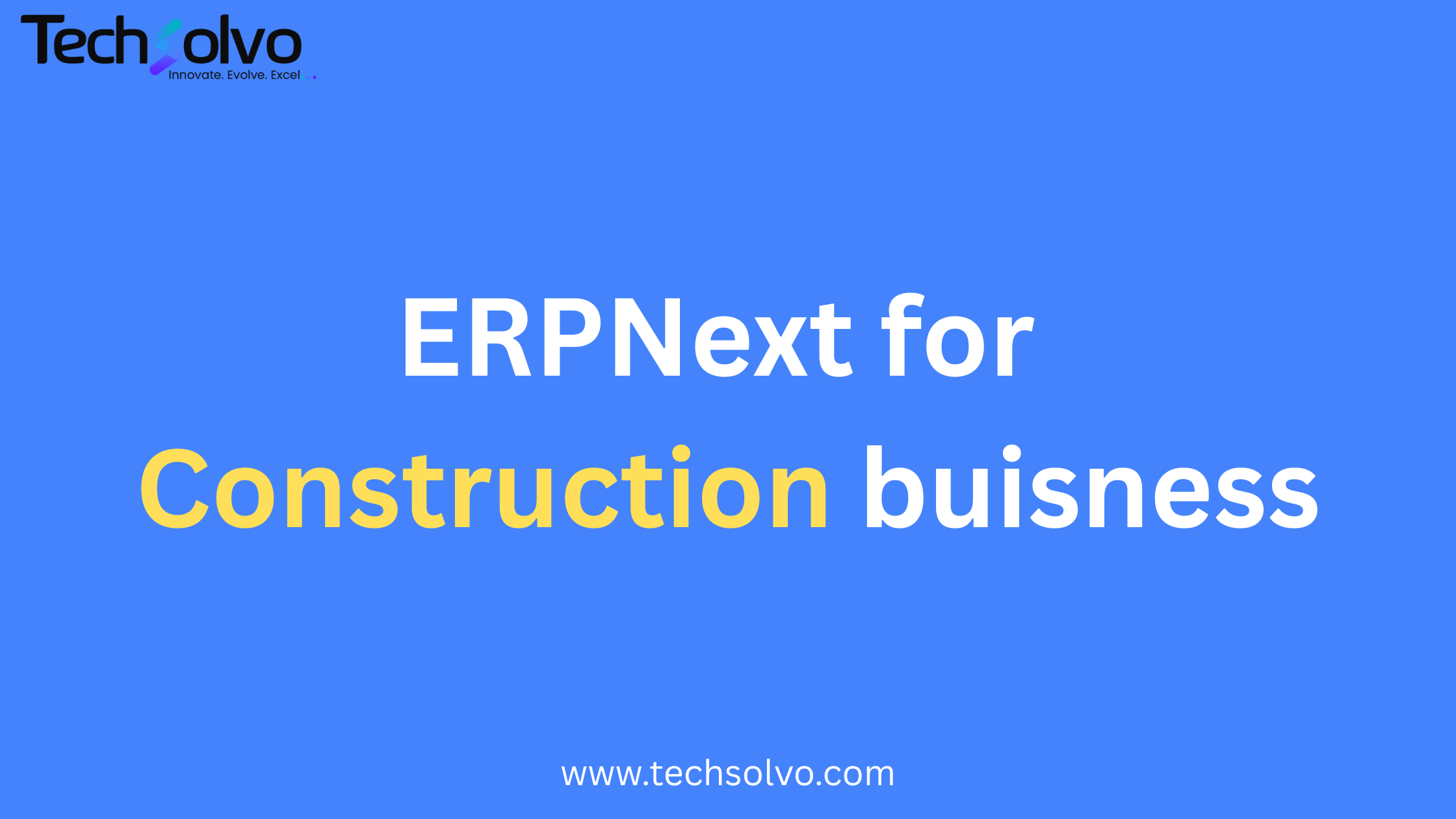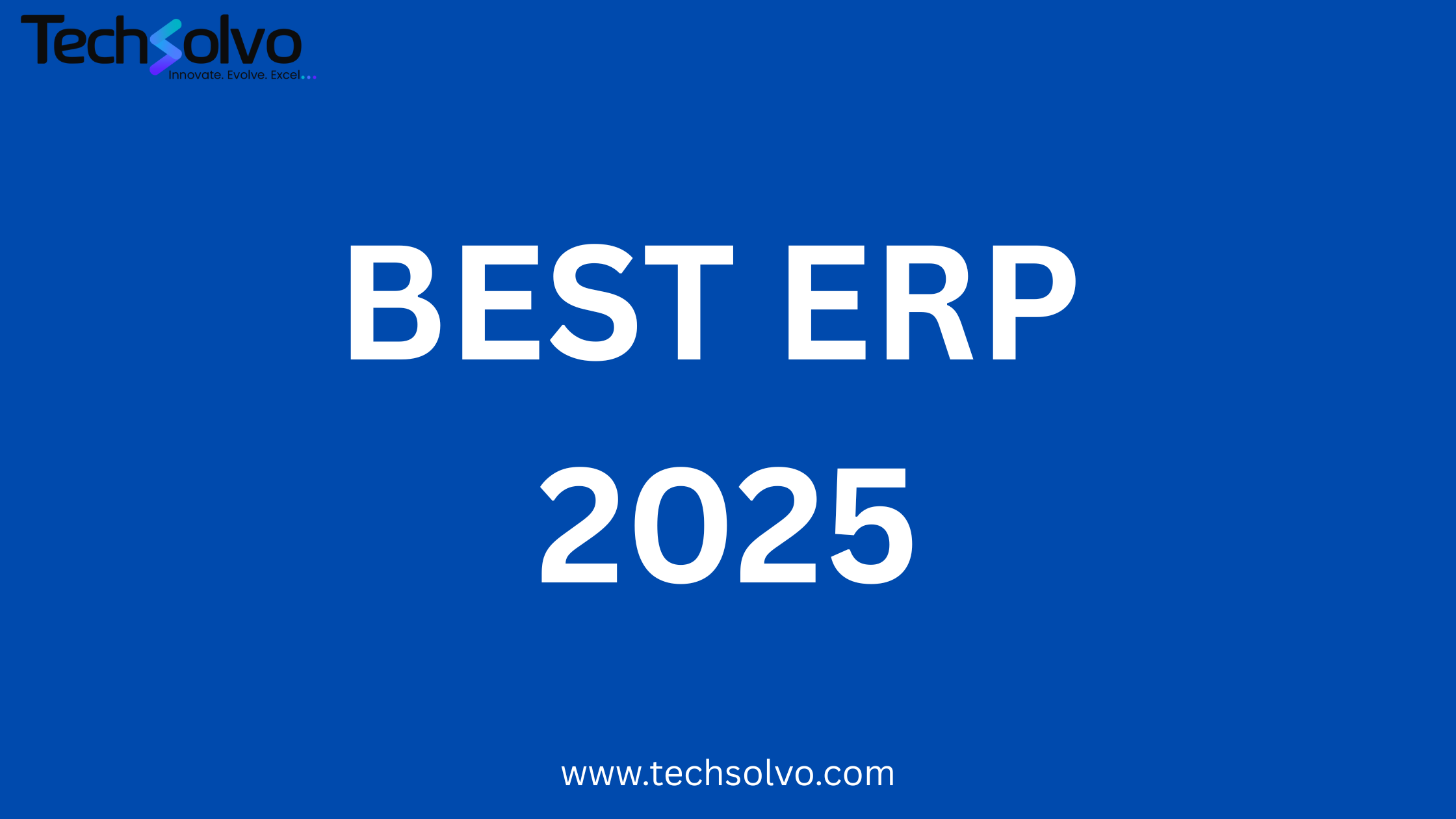
Introduction to ERP for Hospital Management
Enterprise Resource Planning (ERP) is a comprehensive software solution designed to streamline and integrate various business processes and functions within an organization. In the context of hospital management, ERP systems play a crucial role in optimizing the complex operations of healthcare facilities.
1. Definition of ERP: ERP software integrates core business processes such as finance, human resources, procurement, inventory management, supply chain, and more into a single, centralized system. This integration allows for seamless communication and data sharing between different departments, leading to improved efficiency, productivity, and decision-making.
2. Application of ERP in Hospital Management: In hospitals, ERP systems are tailored to meet the unique needs and challenges of the healthcare industry. These systems offer modules and functionalities specifically designed for managing patient data, medical records, billing, scheduling, inventory, and other critical aspects of hospital operations.
Benefits of Using ERP Systems in the Healthcare Industry:
1. Improved Operational Efficiency: ERP systems streamline administrative tasks and automate manual processes, reducing the time and effort required to perform routine activities. This efficiency translates into faster patient registration, smoother billing processes, optimized inventory management, and more effective resource allocation.
2. Enhanced Patient Care: By centralizing patient data and medical records, ERP systems enable healthcare providers to access comprehensive information quickly and accurately. This accessibility improves clinical decision-making, facilitates timely diagnosis and treatment, and enhances overall patient care and satisfaction.
3. Cost Reduction: ERP systems help hospitals reduce operational costs by eliminating redundant tasks, minimizing inventory carrying costs, optimizing resource utilization, and reducing errors and inefficiencies. By streamlining processes and improving productivity, hospitals can achieve significant cost savings over time.
4. Regulatory Compliance: Compliance with healthcare regulations and standards, such as HIPAA (Health Insurance Portability and Accountability Act), is critical for hospitals. ERP systems incorporate built-in compliance features and security protocols to ensure that patient data is protected and that the hospital remains compliant with regulatory requirements.
5. Data-driven Decision Making: ERP systems provide real-time insights and analytics by aggregating and analyzing data from various sources within the hospital. This data visibility enables hospital administrators and management to make informed decisions, identify trends, and implement strategies for continuous improvement.
6. Scalability and Flexibility: ERP systems are scalable and adaptable to the evolving needs of hospitals, allowing them to grow and expand without disrupting operations. Whether adding new facilities, services, or departments, ERP systems can easily accommodate changes and scale up or down as needed.
Challenges in Hospital Management
1. Patient Data Management:
- Data Silos: Patient data often resides in disparate systems, making it difficult to access and integrate information from different sources.
- Data Security: Hospitals must ensure the confidentiality, integrity, and availability of patient data while complying with regulatory requirements such as HIPAA.
2. Inventory Management:
- Supply Chain Disruptions: Hospitals face challenges in managing medical supply chains, including shortages, delays, and disruptions in the procurement of essential supplies and medications.
- Inventory Optimization: Maintaining optimal inventory levels while minimizing wastage and stockouts is a complex task that requires effective tracking and management of medical supplies.
3. Billing and Revenue Management:
- Billing Errors: Manual billing processes are prone to errors, leading to billing inaccuracies, delayed payments, and revenue loss.
- Claim Denials: Hospitals encounter challenges in navigating complex billing rules and regulations, resulting in claim denials and revenue leakage.
4. Scheduling and Resource Allocation:
- Staffing Challenges: Hospitals must efficiently allocate resources such as staff, equipment, and facilities to meet patient demand while balancing workload and staffing requirements.
- Patient Flow: Optimizing patient flow and scheduling appointments, surgeries, and procedures is essential for reducing wait times and improving patient satisfaction.
5. Communication and Collaboration:
- Interdepartmental Communication: Inefficient communication between departments can lead to delays in patient care, misunderstandings, and errors in treatment.
- Care Coordination: Coordinating care among multidisciplinary teams and external stakeholders (e.g., referring physicians, specialists) requires effective communication and collaboration.
6. Regulatory Compliance:
- Compliance Complexity: Hospitals must adhere to a myriad of regulations and standards, including HIPAA, Medicare, Medicaid, and accreditation requirements, which adds complexity to compliance efforts.
- Audit and Reporting: Ensuring compliance with regulatory requirements involves maintaining accurate records, conducting audits, and generating reports to demonstrate compliance.

Traditional Methods vs. Modern Solutions:
- Manual Processes: Traditional methods of managing hospital operations rely heavily on manual processes, paper-based documentation, and spreadsheets, which are time-consuming, error-prone, and inefficient.
- Lack of Integration: Siloed systems and fragmented workflows hinder information sharing and collaboration between departments, leading to duplication of efforts and disjointed patient care.
- Limited Visibility: With traditional methods, hospitals have limited visibility into real-time data and analytics, making it challenging to make informed decisions and optimize operations.
- Risk of Errors: Manual data entry, handwritten notes, and paper-based records increase the risk of errors, inaccuracies, and compliance violations, compromising patient safety and data integrity.
Role of ERP in Hospital Management
1. Streamlining Hospital Operations:
- Integration of Functions: ERP systems integrate various functions and departments within a hospital, including patient management, inventory control, billing, scheduling, human resources, and finance. This integration facilitates seamless data flow and communication across the organization, eliminating silos and improving overall efficiency.
- Automation of Processes: ERP systems automate repetitive and manual tasks, such as data entry, appointment scheduling, inventory tracking, and billing, reducing the administrative burden on hospital staff and minimizing the risk of errors.
- Real-time Data Visibility: ERP systems provide real-time access to critical data and analytics, enabling hospital administrators to make informed decisions, monitor performance metrics, and identify areas for improvement promptly.
2. Key Features and Functionalities of ERP Systems for Hospital Management:
- Patient Management: ERP systems capture and maintain comprehensive patient records, including demographic information, medical history, treatment plans, and billing details. They facilitate efficient patient registration, appointment scheduling, and tracking of patient encounters across various departments.
- Inventory Control: ERP systems optimize inventory management by tracking medical supplies, pharmaceuticals, and equipment levels in real-time. They automate inventory replenishment, reduce stockouts and wastage, and streamline procurement processes through integration with suppliers and distributors.
- Billing and Revenue Cycle Management: ERP systems automate billing processes, generate accurate invoices, and manage claims submission and reimbursement workflows. They ensure compliance with billing regulations, reduce claim denials, and accelerate revenue collection through efficient revenue cycle management.
- Scheduling and Resource Allocation: ERP systems optimize resource utilization by facilitating staff scheduling, room allocation, and equipment utilization based on patient demand and availability. They improve operational efficiency, minimize wait times, and enhance patient satisfaction by optimizing workflows and resources.
- Electronic Health Records (EHR) Integration: ERP systems seamlessly integrate with EHR systems to provide a unified platform for managing patient data and clinical workflows. This integration improves care coordination, enhances clinical decision-making, and promotes interoperability across healthcare providers.
- Analytics and Reporting: ERP systems offer advanced analytics and reporting capabilities to track key performance indicators, monitor operational metrics, and generate actionable insights. They facilitate data-driven decision-making, identify trends, and support quality improvement initiatives in hospital management.
Key Modules in Hospital ERP
-
Patient Registration:
- Enables the efficient capture and management of patient demographic information, insurance details, medical history, and contact information. This module streamlines the registration process, reduces paperwork, and ensures accurate patient data entry.
-
Electronic Health Records (EHR):
- Facilitates the creation, storage, and retrieval of digital patient records, including medical history, diagnosis, treatment plans, medications, and test results. EHR modules provide healthcare providers with real-time access to patient information, enabling better coordination of care and informed decision-making.
-
Appointment Scheduling:
- Allows hospital staff to manage patient appointments, allocate resources, and schedule consultations, diagnostic tests, surgeries, and follow-up visits efficiently. This module minimizes scheduling conflicts, reduces wait times for patients, and optimizes healthcare provider schedules.
-
Inventory Management:
- Tracks and manages hospital inventory, including medical supplies, pharmaceuticals, equipment, and consumables. Inventory management modules automate inventory tracking, reorder management, and stock level monitoring, ensuring adequate supply availability while minimizing excess inventory and stockouts.
-
Billing and Invoicing:
- Handles hospital billing processes, including patient billing, insurance claims processing, invoicing, and revenue cycle management. Billing modules automate billing tasks, generate accurate invoices, track payment status, and facilitate reimbursement from insurance providers, improving revenue collection and financial performance.
-
HR and Payroll:
- Manages hospital staff information, including employee records, payroll processing, attendance tracking, benefits administration, and performance management. HR and payroll modules streamline workforce management, ensure compliance with labor regulations, and facilitate payroll processing, enhancing staff productivity and satisfaction.
-
Pharmacy Management:
- Supports medication management processes, including prescription dispensing, inventory control, medication tracking, and drug interactions monitoring. Pharmacy management modules improve medication safety, reduce medication errors, and enhance medication adherence, promoting better patient outcomes.
-
Laboratory Information System (LIS):
- Facilitates the management of laboratory operations, including sample tracking, test ordering, result reporting, and quality control. LIS modules automate laboratory workflows, streamline test processing, and improve data accuracy, enabling faster diagnosis and treatment decisions.
-
Radiology Information System (RIS):
- Manages radiology department operations, including imaging scheduling, image interpretation, reporting, and image storage. RIS modules optimize radiology workflows, improve image management, and enhance communication between radiologists and referring physicians, leading to more efficient diagnostic services.
-
Financial Management:
- Provides comprehensive financial management capabilities, including budgeting, accounting, financial reporting, and analytics. Financial management modules enable hospital administrators to monitor financial performance, identify cost-saving opportunities, and make informed financial decisions to ensure long-term sustainability.

Customization and Scalability in Hospital ERP
-
Importance of Customization:
- Hospital operations can vary significantly based on factors such as size, specialty, location, and patient demographics. Therefore, it's crucial to choose an ERP solution that offers customization options to tailor the system to the unique requirements of the hospital.
- Customization allows hospitals to adapt the ERP system to their existing workflows, processes, and regulatory compliance needs. It ensures that the ERP solution aligns with the hospital's specific business objectives and operational preferences.
- Customizable ERP modules enable hospitals to add or modify features, fields, workflows, and reports to better suit their operational requirements. This flexibility enhances user satisfaction, improves system adoption, and supports efficient day-to-day operations.
-
Scalability for Growth and Flexibility:
- Hospitals are dynamic environments that experience changes in patient volumes, service offerings, staff size, and technological advancements over time. Therefore, scalability is essential in an ERP system to accommodate the hospital's growth and evolving needs.
- Scalable ERP solutions can seamlessly expand to support the hospital's increasing workload, patient base, and organizational complexity without requiring significant system reconfigurations or disruptions.
- With a scalable ERP system, hospitals can add new users, departments, locations, or functionalities as needed, ensuring that the system remains aligned with the hospital's evolving requirements and strategic objectives.
- Scalability also enables hospitals to leverage emerging technologies, integrate new modules or applications, and adapt to industry changes, regulatory updates, and market trends without outgrowing the ERP system.
- By choosing a scalable ERP solution, hospitals can future-proof their technology investments, minimize the risk of system obsolescence, and maintain operational agility to respond effectively to changing healthcare demands.
Integration with Other Systems in Hospital ERP
-
Importance of Seamless Integration:
- In today's healthcare landscape, hospitals rely on a multitude of technologies and systems to deliver quality patient care, manage operations efficiently, and maintain regulatory compliance. Therefore, seamless integration between ERP systems and other healthcare technologies is paramount.
- Integration allows disparate systems, such as electronic health records (EHR), medical devices, laboratory information systems (LIS), radiology information systems (RIS), pharmacy systems, and billing solutions, to communicate and share data seamlessly. This interoperability enhances the flow of information across the hospital ecosystem, reduces manual data entry, minimizes errors, and improves overall operational efficiency.
- By integrating with clinical systems, ERP solutions can access real-time patient data, treatment plans, medication orders, diagnostic results, and other clinical information. This comprehensive view of patient data enables better care coordination, clinical decision-making, and patient outcomes.
- Integration with administrative systems, such as billing, finance, human resources (HR), and supply chain management, facilitates the exchange of data related to billing, insurance claims, payroll, procurement, inventory management, and regulatory reporting. This streamlines administrative processes, reduces redundancy, and ensures data consistency across departments.
- Seamless integration also enables hospitals to leverage emerging technologies, such as artificial intelligence (AI), machine learning (ML), telehealth platforms, and patient engagement solutions, to enhance care delivery, operational efficiency, and patient satisfaction. By integrating these innovative technologies with the ERP system, hospitals can harness the power of data analytics, predictive analytics, and automation to drive better outcomes and achieve competitive advantage in the healthcare market.
-
Benefits of Integration:
- Improved Data Accuracy and Accessibility: Integration ensures that accurate and up-to-date information is available across all systems, eliminating data silos and discrepancies.
- Enhanced Efficiency and Productivity: Seamless data exchange and automated workflows streamline processes, reduce manual intervention, and free up staff time for more value-added tasks.
- Better Clinical Decision-Making: Access to comprehensive patient data from integrated clinical systems enables clinicians to make informed decisions, personalize treatments, and improve patient safety and outcomes.
- Cost Savings and Revenue Optimization: Integration optimizes revenue cycle management, reduces billing errors, accelerates claims processing, and maximizes reimbursement rates, leading to financial gains for the hospital.
- Regulatory Compliance: Integration helps hospitals maintain compliance with healthcare regulations, such as HIPAA, GDPR, and HITECH, by ensuring secure data exchange, audit trails, and privacy safeguards.
Security and Compliance in Hospital ERP
-
Data Security and Privacy:
- Hospitals deal with sensitive patient information, including medical records, treatment histories, and personal identifiers. Therefore, ensuring robust data security measures within ERP systems is paramount to protect patient privacy and prevent unauthorized access or data breaches.
- ERP vendors employ various security mechanisms, such as encryption, access controls, authentication protocols, and audit trails, to safeguard sensitive data from unauthorized access, manipulation, or theft.
- Data encryption techniques, such as AES (Advanced Encryption Standard) or SSL/TLS (Secure Sockets Layer/Transport Layer Security), are utilized to encrypt data both in transit and at rest, ensuring that data remains confidential and secure even if intercepted by unauthorized parties.
- Access controls and role-based permissions restrict system access based on user roles and privileges, ensuring that users only have access to the data and functionalities necessary to perform their job duties. This helps prevent insider threats and unauthorized access to sensitive information.
- Regular security audits, vulnerability assessments, and penetration testing are conducted to identify and address potential security vulnerabilities, loopholes, or weaknesses in the ERP system, ensuring continuous protection against evolving cyber threats.
-
Compliance with Healthcare Regulations:
- Hospitals are subject to stringent healthcare regulations, such as the Health Insurance Portability and Accountability Act (HIPAA) in the United States, which mandate the protection of patient health information (PHI) and impose penalties for non-compliance.
- ERP vendors ensure that their systems comply with relevant healthcare regulations by implementing features and functionalities that support HIPAA compliance, such as data encryption, access controls, audit trails, and secure data transmission.
- Additionally, ERP vendors provide tools and resources to help hospitals maintain compliance with regulatory requirements, including built-in compliance checks, documentation templates, and regulatory updates to address changes in healthcare laws and regulations.
- ERP vendors may also undergo third-party audits and certifications, such as SOC 2 (Service Organization Control 2) or HITRUST (Health Information Trust Alliance) certification, to validate their adherence to industry best practices and regulatory standards for data security and privacy in healthcare.
Implementation Considerations for Hospital ERP
-
Thorough Planning and Needs Assessment:
- Begin by conducting a comprehensive assessment of the hospital's current workflows, processes, and pain points to identify areas where an ERP solution can add value and streamline operations.
- Develop a detailed implementation plan outlining the project scope, timeline, resource requirements, and key milestones to ensure a structured and organized approach to implementation.
-
Stakeholder Involvement and Communication:
- Involve key stakeholders from various departments, including administrators, clinicians, IT staff, and end-users, throughout the implementation process to gather input, address concerns, and ensure alignment with organizational goals and objectives.
- Establish open lines of communication and regular checkpoints with stakeholders to keep them informed about the progress of the implementation, address any issues or challenges, and solicit feedback for continuous improvement.
-
Customization and Configuration:
- Work closely with the ERP vendor to customize and configure the system to meet the hospital's specific needs and requirements. Tailor the system to accommodate unique workflows, data fields, reporting requirements, and regulatory compliance standards applicable to the healthcare industry.
- Avoid over-customization, as excessive modifications can lead to increased complexity, maintenance challenges, and potential compatibility issues during system upgrades or updates.
-
Change Management and Training:
- Implement a robust change management strategy to prepare employees for the transition to the new ERP system. Communicate the benefits of the system, address concerns, and provide training and support to ensure staff are proficient in using the system effectively.
- Offer comprehensive training programs tailored to different user roles and proficiency levels, including hands-on workshops, online tutorials, user manuals, and ongoing support resources to empower users and foster adoption of the new system.
-
Data Migration and Validation:
- Plan and execute a structured approach to data migration from legacy systems or manual records to the new ERP system. Cleanse, validate, and verify data integrity to ensure accuracy and completeness before migrating data to the new system.
- Conduct thorough testing and validation procedures to verify that data is accurately migrated and that the system functions as expected in real-world scenarios before going live.
-
Continuous Evaluation and Improvement:
- Monitor key performance indicators (KPIs) and metrics post-implementation to assess the impact of the ERP system on hospital operations, efficiency, and outcomes. Gather feedback from users and stakeholders to identify areas for improvement and optimization.
- Implement a process for ongoing system maintenance, updates, and upgrades to ensure the ERP system remains aligned with evolving business needs, technological advancements, and regulatory requirements in the healthcare industry.
Future Trends and Innovations in Hospital ERP
-
Artificial Intelligence (AI) and Machine Learning (ML):
- AI and ML technologies are increasingly being integrated into hospital ERP systems to automate repetitive tasks, analyze vast amounts of data, and provide predictive analytics for improved decision-making.
- AI-powered chatbots and virtual assistants can enhance patient engagement, provide personalized care recommendations, and streamline administrative tasks such as appointment scheduling and billing.
-
Internet of Things (IoT) and Wearable Devices:
- IoT-enabled devices and wearable technology can collect real-time patient data, such as vital signs, activity levels, and medication adherence, and integrate seamlessly with hospital ERP systems for remote monitoring and proactive care management.
- IoT sensors and smart medical devices within hospital facilities can optimize resource utilization, track inventory levels, and ensure equipment maintenance and compliance with regulatory standards.
-
Blockchain Technology for Data Security and Interoperability:
- Blockchain technology offers decentralized and secure data storage solutions that can enhance data security, integrity, and interoperability within hospital ERP systems.
- By leveraging blockchain, hospitals can maintain a tamper-proof audit trail of patient records, ensure data privacy and compliance with regulatory requirements such as HIPAA, and facilitate seamless data exchange across different healthcare providers and systems.
-
Telehealth and Remote Patient Monitoring:
- The rise of telehealth services and remote patient monitoring platforms is driving the integration of telemedicine functionalities into hospital ERP systems.
- ERP solutions equipped with telehealth capabilities enable virtual consultations, remote diagnostics, and patient monitoring from anywhere, improving access to care, reducing healthcare costs, and enhancing patient outcomes.
-
Cloud-Based Solutions for Scalability and Flexibility:
- Cloud-based ERP solutions offer scalability, flexibility, and cost-effectiveness compared to traditional on-premises systems, allowing hospitals to scale resources up or down based on demand and access data and applications from any location or device.
- Cloud-based ERP platforms also facilitate seamless integration with third-party applications, interoperability with other healthcare systems, and rapid deployment of updates and new features.
-
Personalized Medicine and Precision Healthcare:
- Hospital ERP systems are evolving to support personalized medicine initiatives by aggregating and analyzing patient data to tailor treatments and interventions based on individual genetic, environmental, and lifestyle factors.
- ERP solutions equipped with precision healthcare capabilities enable clinicians to deliver targeted therapies, predict disease risk, and optimize treatment outcomes through data-driven insights and decision support tools.
In conclusion, TechSolvo LLP stands at the forefront of revolutionizing hospital management through the implementation of ERPNext solutions tailored specifically for the healthcare industry. With a comprehensive understanding of the unique challenges faced by hospitals and a commitment to leveraging cutting-edge technology, TechSolvo offers a transformative approach to hospital ERP implementation.
By partnering with TechSolvo, hospitals can unlock a myriad of benefits, including streamlined operations, enhanced efficiency, cost savings, and improved patient care delivery. The ERPNext solution provided by TechSolvo integrates seamlessly with existing hospital systems and processes, empowering healthcare providers to optimize resource utilization, automate administrative tasks, and make data-driven decisions.
TechSolvo's team of experienced professionals guides hospitals through every step of the ERP implementation process, from initial consultation and system customization to training and ongoing support. With a focus on scalability, flexibility, and regulatory compliance, TechSolvo ensures that hospitals can adapt and thrive in an ever-changing healthcare landscape.
Through the deployment of ERPNext solutions, TechSolvo enables hospitals to embrace digital transformation, improve operational agility, and deliver high-quality care to patients. By harnessing the power of ERP technology, TechSolvo empowers hospitals to enhance their competitiveness, drive innovation, and achieve sustainable growth in the rapidly evolving healthcare industry.
With TechSolvo as their trusted partner, hospitals can embark on a journey towards digital excellence, realizing their vision of efficient, patient-centric healthcare delivery powered by ERPNext solutions.
Insights
To properly understand the things that are prevalent in the industries, keeping up-to-date with the news is crucial. Take a look at some of our expertly created blogs, based on full-scale research and statistics on current market conditions.

How ERPNext Transforms Construction Businesses in the UAE | Techsolvo
Learn how ERPNext helps UAE construction firms streamline projects, procurement, retentio…

Why ERPNext is the Best ERP Software for Businesses in 2025 | Techsolvo
Discover why ERPNext is the top choice for modern businesses in 2025. Learn how Techsolvo…

Why Techsolvo is the Best ERPNext Implementation Partner in UAE
Discover why Techsolvo is recognized as the best ERPNext agency in the UAE. Trusted by ma…

